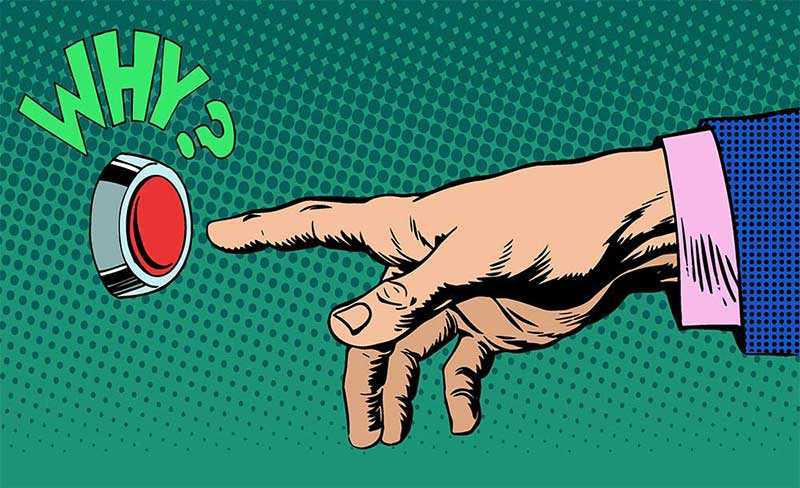The science of fundraising: Ask a behavioural scientist, part one
SOFII would like to thank The Agitator and DonorVoice for letting us reproduce this special Q&A session with Dr Kiki Koutmeridou. In part one, Kiki explores the behavioural science behind charitable giving.
- Written by
- Kiki Koutmeridou
- Added
- June 04, 2020

Behavioural science is a key study of human actions flowing from understanding behaviour, attitudes and motivations. It usually includes the fields of sociology, social and cultural anthropology, psychology, as well as behavioural aspects of biology, economics, geography, law, psychiatry, and political science. A behavioural scientist researches and attempts to explain human behaviour. This research can be done in many ways. Some studies require participants to fill out surveys about their behaviour, thoughts and reasoning behind actions. In other words it’s the science of how people will think and act, or are most likely to act, given any set of circumstances and it relies heavily on the study and understanding of neuroscience (the science of the human nervous system – ie, how the brain works).
As such, behavioural science could potentially be a fundamental tool for understanding why people give to charity and under which circumstances donations are more or less likely.
Dr Kiki Koutmeridou is a behavioural science expert who works closely with charities on the application of behavioural insights to charitable marketing communications. For the past couple of years, she has been answering fundraisers’ questions via the site of our friends The Agitator and we are extremely grateful to Kiki and The Agitator for letting us reproduce some of those questions and answers on SOFII. We will frequently publish new questions, so please stay tuned to learn when new content on this topic is available.
We also want you to get involved. Kiki has kindly agreed to answer any questions you may have that don’t appear here. If you have any, please ask them in the comments section below. Now over to Kiki!
- Joe Burnett, SOFII’s contributing editor

Q: How do the tactics differ for major givers and lower dollar donors?
Kiki: While major donors share most of the motivations of individual donors e.g. they might have a connection to the cause, they want to make a difference, there are 4 differentiating factors that can inform strategy.
1) A major gift is considered more as an investment. Thus, major donors pay close attention to the financial stability, effectiveness and efficiency of the charity that asks for their support. Major gift officers need to provide that information during the acquisition process. Once the gift is made, however, major donors don’t require to receive financial updates.
2) Major donors are more interested in the difference they will personally make, rather than the usual “together we can…” pitch. Charities should emphasise their personal impact and adapt the language and offers accordingly to increase conversion.
3) Some major donors have an appetite to do more than just help financially. They might want charities to ask for their advice and involve them in various decisions. Find out your major donors’ preference and satisfy it.
4) Some major donors give out of a sense of responsibility towards less fortunate people. This group is more likely to give anonymously. Instead of offering expensive recognition offers to all major donors, find out their motivation and only offer it to groups that are open to it.
The above is a very crude summary; there’s a lot of literature on major donor motivations as well as the most effective ways to target them which can’t be easily summed up. I hope it’s a good starting point.
Q: What immediate information would compel someone to support the long-term vision of conservation?
Kiki: Great question. To answer it, I need to take a step back.
People act in order to gain a positive outcome or to avoid a negative one. The most powerful outcomes in motivating or altering our behaviour are those who are immediate and certain. For example, we stop behaving a certain way when our behaviour brings about immediate negative outcomes.
That’s why most environment-destructive behaviour happens. The positive consequences are immediate and certain e.g. comfort, convenience, perceived efficiency while the negative consequences seem improbable and remote. What is more, behaving pro-environmentally is typically inconvenient, expensive, or uncomfortable, which are negative consequences that happen immediately and certainly.
All of the above goes against the adoption of pro-environmental behaviour, even if people acknowledge it should occur. That’s why instruction or information alone is insufficient; people are knowingly doing the wrong thing. On top of that, attitudes are difficult to identify, and even more difficult to change directly. Most of us don’t have the education, training, experience, nor time to do that.
So what could we do instead? We could design a motivational intervention where an incentive/reward program is used to alter a target behaviour directly. When you change people’s behaviour, you will indirectly improve their attitude, commitment and internal motivation.
So, look for external factors influencing a certain behaviour, e.g. equipment design, management systems, the behaviours shown by others, and various social dynamics and design a behavioural intervention. We can motivate people to act a certain way by using external encouragement or pressure to change.
It’s critical, however, that you use positive over negative reinforcement. A reward approach is more likely to make people think their behaviour change is voluntary and stick with it. On the contrary, a disincentive or punishment might be perceived as a threat to one’s freedom and have the opposite result. Positive recognition of a certain behaviour not only increases the frequency of that behaviour but also increases the likelihood that other desirable behaviours will be adopted. So, recognising people’s environmentally friendly behaviour will promote more learning and positive motivation than will criticising their environmentally destructive behaviour. Finally, positive attitudes are more likely to follow an incentive/reward approach and when that attitude is linked to one’s behaviour change, the likelihood that this behaviour will become a norm increases.
To sum up:
Instead of an intervention which thinks people into acting differently, opt for a behaviour-based intervention which acts people into thinking differently. Only this way can both behaviour and attitude be improved at the same time.
- Don’t try to change attitudes by sharing information
- Try to change behaviour by identifying external factors that could improve it
- Implement a reward, not punishment, programme to motivate the desired behaviour
You might also find useful the handbook of environmental psychology which you can access here.

Q: Are there testing or white papers that confirm the need to make a specific ask in a fundraising appeal?
Kiki: I assume you refer to the mention of a specific gift amount.
There are many academic papers that show how the mention of a number – even if it’s not the actual price – can influence what people are willing to pay for a product. This bias is called anchoring and is more pronounced when we find ourselves in new situations where we try to find cues to help us make a decision.
The same bias can influence donations especially in acquisition efforts. New supporters won’t have a clear idea of what an appropriate donation amount is. Hence, by providing them with a suggested amount we help them make a decision. The suggested amount will function as the anchor from which they’ll adjust and decide on their gift amount. Higher suggested amounts have been shown to increase average gift while their effect on response rate is mixed: sometimes they decrease it, other times they had no effect on it.
Existing supporters mainly focus on their prior behaviour to inform future behaviour. But you can still use their previous gift as the suggested amount for their next donation.
Anchoring is one of the most robust effects and you can make use of it even in the structure of your ask strings. If you have three or more suggested amounts, test starting with the highest amount first instead of the lowest and observe any differences in average gifts and/or response rates. In principle, you should start receiving higher average donations. What is less sure is what happens to the response rate.
If you decide to do this test, I’d be happy to help.
Q: How can behavioural science help increase attendance/participation at fundraising gala and live auction events?
Kiki: I can think of the following principles that could be applied:
- Scarcity: show that there aren’t many places to begin with or left
- Exclusivity: builds on scarcity but also introduces flattery, they’ve been handpicked
- Urgency: tackle procrastination by requesting immediate action for a reason
- “We reserved you a seat”: The Behavioural Insights Team had tested various messages to improve attendance and they found that this was the most effective
- Loss aversion: use the fear of missing out
- Social proof: show that this event is popular for people similar to them
- Perceived impact: people help because they want to make a difference. Emphasise the impact they might have
There are many ways to execute on all the above. Below are some examples. Some are using a combination of the above principles:
- Invitation only event for select audience
- Limited seats
- Half of the seats are gone already
- We reserved you a seat
- Reply ASAP so that you don’t miss your seat
- Join your peers in having your say and making an impact
- Don’t miss out on your chance to make a difference
This isn’t an exhaustive list of how behavioural science could help. Knowing the details of the event and the audience would help determine how else you could nudge behaviour.

Q: I am curious about Seth Godin’s statement related to not having a donate banner on a nonprofit website. Thoughts from the Agitator?
Here’s Seth's blog post.
Kiki: In my view, the answer isn’t the same for all organisations. When it comes to health charities, Seth’s approach is a winner. When it comes to any other charitable organisation, there’s need for balance. Let me explain.
Visitors to a health charity’s site are most likely looking for information or support. Their primary goal is to feel more in control of their situation and relieve their stress. Making a gift might not be crossing their minds at that point. Imagine how they will feel though after they found what they were looking for. In that moment, when they feel grateful to the charity for providing what they needed, they might consider to give something back. In short, health charities could lose the donate banner on the homepage, focus on services, ask after the service has been provided and increase revenue.
Now let’s consider any other charitable organisation. In this case, website visitors might just want to know more about the charity, or they might want to donate. Having a donate banner that takes up most of the real estate might turn off people who arrived there to learn more. Removing the donate option completely might increase the hassle and frustration for people whose sole purpose was to make a gift. That’s why there’s a need for balance. The answer isn’t whether you should have a donate option or not but how you execute it. There’s no reason why you couldn’t dedicate a small but distinctive area of the homepage to donations. It will make life easier for those who want to give while the rest can easily ignore it. People know they’re on a charity’s website after all and charities ask for money. Not only it won’t come as a surprise to them but it’s kind of expected.
Q: If I have a donor who will give me $100k now and another 100k when I raise the same, what is the best approach to running a challenge? Best time of year and how long should the challenge remain open?
Kiki: Interesting question. Below is what I’d set up along with the biases that affect behaviour (in brackets):
- Challenge people to raise $200k to unlock another $100k (gaming, goal motivation, perceived impact)
- Explain what you will do with the whole $300k – a specific project would be ideal (tangible benefit, perceived impact)
- Announce right from the start that you already received a lead donation of 100k (social proof)
- Visualise how you’re already half of the way there (progress towards goal)
- (If online) show recent donations as they come in to trigger similar behaviour (social proof, anchoring)
- Update the visual of the goal & money raised (goal proximity)
I don’t have a specific view around time of year. People are more generous towards the end of the year but that in itself might be an argument to try this at a different time. Maybe this way you could increase giving at otherwise slow periods.
The length of the challenge will depend on whether the donor has set any time limits. For example, did they say you need to raise the extra 100k within a set time? If not, I’d leave the challenge open. Typically, deadlines tend to cut off the tail end of donations because no one gives once the deadline has passed. If you do need to set a time frame though, go for a week’s deadline – its immediacy tackles procrastination more effectively than say, a month’s deadline.

Q: Do you have any data or research on the impact of handwritten thank you cards?
Kiki: Unfortunately, I don’t have any data on this however below are a few things to consider. I make these points with fundraising in mind, but the same could apply in other fields.
- In some cases handwriting might decrease processing fluency and make the cards more difficult to read. Always make sure it’s legible.
- The receiver might feel more valued for the time and effort the sender spent.
- Handwritten cards could decrease the social distance between two people as they’re more personal.
- Handwritten fonts might be less effective than actual handwriting as people realise it’s not actual effort. Since you offer both services, this would be a worthwhile test for you that could inform your recommendations.
- Potentially more important than the handwriting is the actual message. If it feels like it’s mass produced and shared with many others that feeling of a special relationship will dissipate. Handwriting a message could make the receiver feel valued but what truly matters is making reference to unique elements of that person or your relationship with them. An email, even though typed, can be very intimate and personal just like a card, even though handwritten, could make you feel like a widget on an assembly line.
- In the context of fundraising especially, you also need to consider the effect of the thank you cards regardless of their font. It’s not necessary that they will always have a positive impact on giving. In some cases, they might have a negative impact and in others no impact at all. The latter is as important as having a negative impact – if they don’t move the needle in the right direction, why send them?
Note: Don’t forget to stay tuned for the next round of questions. And to submit your own in the comments section below.

















